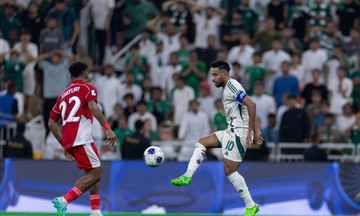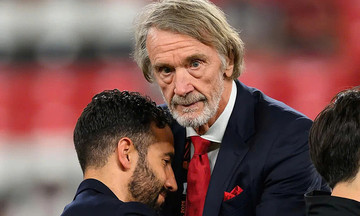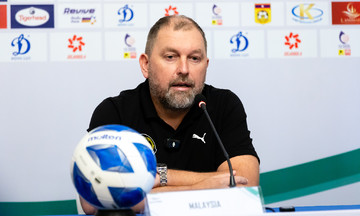Alcaraz has always been known for his explosive forehand winners. His backhand, however, was never considered a standout weapon. It was solid enough, but not the first strength that came to mind when discussing the world number two's skills.
So, the 22-year-old Spaniard decided to revamp his backhand. Not a complete overhaul – like the new hairstyle he debuted at Flushing Meadows – but a series of small adjustments since the 2024 US Open. These tweaks, when combined, could significantly change how he plays on hard courts. As Alcaraz himself shared in April with Tennis Majors, before the Monte-Carlo Masters: "A change perfected in three or four days during the pre-season."
One of the first changes is how Alcaraz prepares for his backhand. "I started by slightly adjusting my movement and technique, lowering the racket a bit," the Murcia native revealed. His preparation is now more compact, adapting to the increasing pace of modern tennis.
Last year, Alcaraz employed a wide swing, with the racket head at shoulder height. Now, he's simplified the motion. The racket head starts lower, around chest level, and his arm makes a more direct swing. This allows him to react faster and be less vulnerable to quick, powerful shots from opponents.
 |
In 2024 (left), Alcaraz's racket head was positioned between his shoulder and chest during preparation. Now (right), it sits between his chest and lower abdomen, as observed on 6/8/2025, during a practice session in Cincinnati. *Photo by Tennis Majors* |
In 2024 (left), Alcaraz's racket head was positioned between his shoulder and chest during preparation. Now (right), it sits between his chest and lower abdomen, as observed on 6/8/2025, during a practice session in Cincinnati. *Photo by Tennis Majors*
To save these precious milliseconds, Alcaraz starts with his left arm extended, rather than bent as before. This small detail is crucial: it allows for a quicker swing.
For example, against Reilly Opelka, ranked 67th, in the first round of the 2025 US Open, Alcaraz repeatedly surprised the American "giant," particularly with down-the-line backhands, as powerful and sharp as his opponent's formidable forehand.
 |
To swing from a lower position, Alcaraz now begins his preparation with his left arm extended (right), rather than bent as before (left). *Photo by Tennis Majors* |
To swing from a lower position, Alcaraz now begins his preparation with his left arm extended (right), rather than bent as before (left). *Photo by Tennis Majors*
After shortening his preparation, Alcaraz adjusted his grip, placing his hands closer together on the handle. This increases stability and control upon contact. This subtle yet important detail allows him to absorb the pace of his opponents' shots instead of generating all the power himself.
 |
For his two-handed backhand, Alcaraz's hands are now closer together on the racket handle (right), compared to the previous gap (left). *Photo by Tennis Majors* |
For his two-handed backhand, Alcaraz's hands are now closer together on the racket handle (right), compared to the previous gap (left). *Photo by Tennis Majors*
As a result, Alcaraz controls the pace of play, even against the tour's biggest hitters. His racket feels like an extension of his arm, providing solid control, especially when returning serves or dealing with fast-paced shots.
A shorter backswing often comes at a cost: how to maintain topspin, essential for backhand safety? Alcaraz found a solution. During his swing, his right hand bends more than before, bringing the racket head very low, sometimes almost to his knee, to "grip" the ball and generate spin. This maintains the topspin effect, ensuring a safe margin over the net.
 |
In 2024, Alcaraz only slightly lowered his racket during his backhand (left). Now, he drops the racket head closer to his knee, bending his right hand more, to generate additional topspin (right). *Photo by Tennis Majors* |
In 2024, Alcaraz only slightly lowered his racket during his backhand (left). Now, he drops the racket head closer to his knee, bending his right hand more, to generate additional topspin (right). *Photo by Tennis Majors*
With this change, the Roland-Garros champion feels he can "hit with more topspin and more safely," as he shared before the Monte-Carlo Masters. This improved two-handed backhand could be a decisive advantage as Alcaraz seeks his second US Open title, three years after his 2022 triumph.
Hoang Thong (via Tennis Majors)












